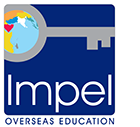ABOUT SAT
What is the SAT?
The Scholastic Aptitude Test (SAT) is a standardized test widely used for college admissions in the United States and other countries. Introduced in 1926, its name and scoring have changed several times; originally called the Scholastic Aptitude Test, it was later called the Scholastic Assessment Test, then the SAT I: Reasoning Test, then the SAT Reasoning Test, and now, simply the SAT.
Owners of SAT
The SAT is owned and published by the College Board, a private, not-for-profit corporation in the United States. It is developed and administered on behalf of the College Board by the Educational Testing Service (ETS). The test is intended to assess students’ readiness for college.
Purpose of SAT
SAT scores/grades are mostly used by universities and colleges in the U.S. offering undergraduate programs. Many institutions worldwide also consider SAT scores for admissions and scholarships.
Why Take the SAT?
- Global Recognition: Accepted by thousands of colleges and universities worldwide.
- Scholarship Opportunities: High SAT scores can enhance scholarship eligibility.
- Test-Optional Flexibility: Many universities consider SAT scores for admission, even if they are test-optional.
- Measures College Readiness: Helps students showcase their academic strengths and problem-solving abilities.
Who Should Take the SAT?
The SAT is ideal for:
- High school students aiming for undergraduate admission in the USA and other international institutions.
- Students seeking scholarships or merit-based financial aid.
- Individuals who want to strengthen their college applications.
SAT Test Format
The SAT consists of two main sections:
- Reading & Writing (RW) – 64 minutes
- Reading comprehension
- Grammar and editing skills
- Math – 70 minutes
- Algebra, geometry, data analysis, and problem-solving
- Calculator and non-calculator sections
SAT Scoring System
- Each section is scored between 200-800, with a total score range of 400-1600.
- There is no penalty for wrong answers.
SAT Test Dates & Registration
- Test Frequency: Conducted multiple times a year globally.
- Registration: Candidates must register via the official College Board website.
- Mode of Exam: Available in digital format.
- Registration Link: College Board SAT Registration
SAT Fees
For test dates beginning with August 24, 2024, the SAT registration fee is $68, plus a $43 international fee.
- Detailed Fee Structure: SAT Fees
SAT Preparation Tips
- Understand the Test Format: Familiarize yourself with question types and time limits.
- Use Official Study Materials: Leverage SAT practice tests and resources.
- Develop Strong Reading & Math Skills: Focus on comprehension, problem-solving, and analytical skills.
- Time Management: Practice under timed conditions to improve speed and accuracy.
- Take an SAT Preparation Course: Enroll in coaching programs for expert guidance.
Structural Changes to the SAT (Comparison with Old SAT)
| Feature | Old SAT | New SAT |
|---|---|---|
| Score Scale | 600-2400 | 400-1600 |
| Sections | Critical Reading (200-800) Writing (200-800) Math (200-800) | Evidence-Based Reading & Writing (200-800) Math (200-800) Optional Essay |
| Essay Length | 25 minutes (required) | 50 minutes (optional) |
| Total Exam Time | 3 hours | 2 hours 14 Mins (without essay) 3 hours 50 minutes (with essay) |
| Scoring | Essay included in writing score | Essay receives separate scores (Reading, Analysis, Writing: 2-8) |
| Calculator Use | Allowed throughout Math section | Some no-calculator segments |
| Incorrect Answers | ¼-point penalty for incorrect answers | No penalty for incorrect answers |
| Testing Format | Paper-based | Online |
Content Changes in SAT
- Essay: The new SAT essay is optional and requires students to analyze an argument using evidence, rather than form their own argument.
- Verbal Section: Includes passage-based evidence questions, requiring students to support answers with textual references.
- Vocabulary: Shifted from obscure words to relevant words in context that have multiple meanings based on usage.
- Math: More focused on algebra, problem-solving, and data analysis, with some advanced concepts such as trigonometry.
SAT Redesign
The SAT was redesigned in March 2016 to align more closely with high school curricula and college-level work. Key changes include:
- Removal of negative marking for incorrect answers.
- Greater focus on analytical and evidence-based reasoning.
- Optional essay with analytical writing requirements.
SAT Test Dates
- Test Date Availability: Check the latest dates here – SAT Test Dates
With this information, you can analyze the SAT score requirements for your preferred colleges. A good SAT score can also help in securing scholarships and financial aid for your entire study program.
(Courtesy: collegereadiness.collegeboard.org)



